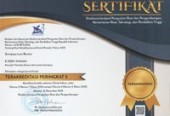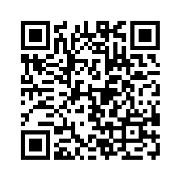The Problematics of Management Personal Protection Equipment Waste related to Covid-19 in Indonesia
Abstract
Medical Waste for Covid-19 Personal Protective Equipment (PPE) is classified as B3, which can potentially be a medium for spreading the virus. Therefore, management must be carried out, consisting of collection, sorting, transportation, temporary storage, to processing (destruction) based on the Circular of the Minister of Environment and Forestry Number 2 of 2020 using the incinerator and problematic autoclave methods. The purpose of this study is to find out how the law regulates the management of Covid-19 PPE waste in Indonesia and how it should be. The research method used is normative legal research. The results showed that based on the Circular Letter of the Minister of LHK No. 2 of 2020, it is determined that the destruction of Covid-19 PPE waste as B3 waste must go through an incinerator facility with a minimum combustion temperature of 800⁰ C and an autoclave equipped with a shredder. This method is considered overkill and incurs high costs. The conclusion of this study is to provide input for the Government to review or revise the Circular regarding safer Covid-19 PPE B3 waste management, including through the pyrolysis method.
Keywords
Full Text:
PDFReferences
Ajeng, Alvionita Purwanti. "The Processing Of Hazardous And Toxic Hospital Solid Waste In Dr.Soetomo Hospital Surabaya" Jurnal Kesehatan Lingkungan Vol 10, No 3 (2018) https://e-journal.unair.ac.id/JKL/article/view/6721
Battista, Rosa Alessia MD; Ferraro, Milena MD; Piccioni, Lucia Oriella MD; Malzanni, Giulia Elvira MD; Bussi, Mario MD. "Personal Protective Equipment (PPE) in COVID 19 Pandemic Related Symptoms and Adverse Reactions in Healthcare Workers and General Population". Journal of Occupational and Environmental Medicine February 2021 Volume 63 Issue 2. https://journals.lww.com/joem/Fulltext/2021/02000/Personal_Protective_ Equipment__PPE__in_COVID_19.18.aspx
Convention, Basel. Technical Guidelines on the Environmentally Soud Management of Biomedical and Healthcare Wastes (Y1;Y3). UNEP, 2003.
Hutchinson, Terry. Researching and Writing in Law. Pyrmont, NSW, 2002.
Ilyas, Sadia, Rajiv Ranjan Srivastava, and Hyunjung Kim. “Disinfection Technology and Strategies for Covid-19 Hospital and Bio-Medical Waste Management.” Elsevier, 2020, 1–12. 10.1016/j.scitotenv.2020.141652.
Ismawati, Yuyun Yunia. “Empat Cara Mengolah Lombah Masker & APD Selama Pandemi Covid-19, Mana Yang Lebih Efektif?” The Coversation, 2020. https://theconversation. com/empat-cara-mengelola-limbah-masker-dan-apd-selama-pandemi-covid-19-mana-yang-lebih-efektif-135956.
Isykapurnama, Syauki, Darsih Sarastri, and Hega ’Aisyah Mahardika. “Potensi Teknologi Pengolahan Berbasis Pirolisis Dalam Penanganan Limbah Alat Pelindung Diri Yang Menumpuk Di Masa Pandemi Covid-19.” Journal of Research in Pharmacy 1, no. 1 (2021): 34–39. https://ejournal2.undip.ac.id/index.php/generics/article/view/9797.
Jumari, Arif. "Potensi Pelanggaran Pengelolaan Limbah Bahan Berbahaya dan Beracun" Jurnal Bestuur Vol.7, Issue.2, December, 2019 https://jurnal.uns.ac.id/bestuur/article/view/40414
Kusuma, Elsa Yolarita and Desi Widia. “Pengelolaan Limbah B3 Medis Rumah Sakit Di Sumatera Barat Pada Masa Pandemi Covid-19.” Jurnal Ekologi Kesehatan 19, no. 3 (2020): 148–60.
Latif, Absori and Muhamad. “Kebijakan Hukum Dalam Pengelolaan Limbah Bahan Berbahaya Dan Beracun (B3) : Studi Implementasi Pengelolaan Limbah Medis Di Rumah Sakit Salatiga.” Journal of Indonesian Law 1, no. 1 (2020): 91–117. https://e-journal.iainsalatiga. ac.id/index.php/jil/article/view/4381.
“LKHK Catat Paningkatan 30-50 Persen Limbah Medis Saat Pandemi.” Anataranews.Com, November 2020. https://www.antaranews.com/berita/1837616/klhk-catat-peningkatan-30-50-persen-limbah-medis-saat-pandemi.
Hermanto, Mohamad Oktama. "Urgensi Pengaturan Pengelolaan Limbah Masker Bekas Pakai Dalam Mencegah Penularan Covid-19." Jurnal Hukum Juni 2021. http://hukum. studentjournal.ub.ac.id/index.php/hukum/article/view/4337
Prasetiawan, Teddy. “Permasalahan Limbah Medis Covid-19 Di Indonesia.” Pusat Penelitian Badan Keahlian DPR RI XII, no. 9 (2020).
Prihartanto. "Prediction of medical hazardous waste generation from covid-19 patient handling hospitals". Jurnal Sains dan Teknologi Mitigasi Bencana, Vol. 15, No. 1, Juni 2020. https://ejurnal.bppt.go.id/index.php/JSTMB/article/view/4406
Putri, Pricillia Ervian Sitompul. "Menilik kebijakan pengolahan limbah B3 fasilitas pelayanan kesehatan selama pandemi COVID-19 di Provinsi Jawa Barat". Dinamika Lingkungan Indonesia, Januari 2021. Volume 8, Nomor 1. https://dli.ejournal.unri.ac.id/index.php/DL
Ramadhanty, Nia Purwanto, Syauqi Al Amin, Ainun Mardiyah, Yosia Retno Wahyuningtyas, "Pengaturan Pengelolaan Limbah Medis Covid-19" Jurnal Yustika Vol. 23 No. 02, Des 2020 http://journal.ubaya.ac.id/index.php/yustika
Rhiti and Y. Sri Pudyatmoko. "Kebijakan Perizinan Lingkungan Hidup Di Daerah Istimewa Yogyakarta". Mimbar Hukum Volume 28, Nomor 2, Juni 2016, https://jurnal.ugm. ac.id/jmh/issue/view/2210
Sudarmaji, Tentrami Hayuning Ichtiakhiri and. “Pengelolaan Limbah B3 Dan Keluhan Kesehatan Pekerja Di PT. Inka (Persero) Kota Madiun.” Jurnal Kesehatan Lingkungan 8, no. 1 (2015): 118–27. https://e-journal.unair.ac.id/JKL/article/viewFile/3109/2260.
Suriyani, Luh De. “Dampak Limbah Medis Saat Pandemi.” Mongabay. 2020. https://www.mongabay.co.id/2020/10/05/dampak-limbah-medis-saat-pandemi/.
Sutrisno, Hendry and Fitriana Meilasari. "Review: Medical Waste Management For Covid19". Jurnal Kesehatan Lingkungan Vol 12, No 1si (2020), https://e-journal.unair.ac.id/ JKL/article/view/20770
The Law Number 32 of 2009 on Environmental Protection and Management (n.d.).
DOI: http://dx.doi.org/10.28946/slrev.Vol5.Iss2.1161.pp300-308
Refbacks
- There are currently no refbacks.

Sriwijaya Law Review (SLRev) ISSN: 2541-5298 | e-ISSN: 2541-6464 is licensed under a Creative Commons Attribution-ShareAlike 4.0 International License.






















